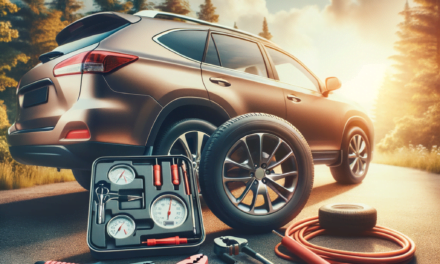Introduction
Long hours of commuting or driving can take a toll on your body, leading to discomfort, fatigue, and even chronic pain. As a driver, it’s essential to create an environment that supports your health and well-being. Ergonomic accessories for your vehicle can make a significant difference in how you feel during and after your drive. Whether you’re embarking on a daily commute or a long road trip, incorporating ergonomic accessories can enhance your overall driving experience, ensuring you arrive at your destination feeling refreshed and pain-free.
Step-by-Step Guide to Ergonomic Driving Accessories
Step 1: Choose the Right Seat Cushion
A supportive seat cushion can alleviate pressure on your lower back and hips, promoting better posture and reducing the risk of pain. Look for a cushion with memory foam or gel that contours to your body, and ensure it has a non-slip bottom to keep it in place. An example of such a product is the Everlasting Comfort Seat Cushion designed for tailbone and sciatica pain relief.
Step 2: Install a Lumbar Support
Many car seats lack adequate lumbar support, which is crucial for maintaining the natural curve of your spine. An adjustable lumbar support accessory like the Supportiback Posture Therapy Lumbar Support Cushion can fill this gap and prevent lower back strain. Position it at the small of your back for optimal support.
Step 3: Adjust Your Steering Wheel Grip
Driving with a grip that’s too tight can lead to hand and wrist fatigue. Consider adding a steering wheel cover that enhances grip and reduces the need to clench. Choose one made of breathable material to keep your hands cool and comfortable. The SEG Direct Black Microfiber Leather Auto Car Steering Wheel Cover is a universal fit and can help alleviate hand fatigue.
Step 4: Optimize Your Foot Support
Proper foot placement is vital for maintaining good posture and reducing leg fatigue. If your car doesn’t provide adequate foot support, consider a footrest or a heel pad that can help maintain the correct driving position.
Step 5: Use a Neck Pillow
A neck pillow can provide support during longer drives, preventing neck strain and tension headaches. Look for an ergonomic design that attaches to your seat and keeps your neck aligned with your spine. The Feagar Car Seat Neck Pillow is one such product that can offer the needed support.
Tips for Maximizing Comfort and Safety
- Adjust Your Seat Properly: Before adding accessories, ensure your seat is adjusted to allow your feet to reach the pedals comfortably, and your arms to have a slight bend when holding the steering wheel.
- Take Regular Breaks: No accessory can replace the need to stretch and move your body. On longer drives, stop every couple of hours to walk around and stretch.
- Maintain a Clean Driving Environment: Clutter can contribute to stress and discomfort. Keep your car clean and organized to promote a sense of well-being.
Common Mistakes to Avoid
- Ignoring the Fit: Make sure any accessory you choose fits your car and your body. An ill-fitting cushion or support can do more harm than good.
- Overaccessorizing: Too many accessories can clutter your driving space and potentially interfere with your control of the vehicle. Stick to the essentials that provide the most benefit.
- Compromising on Quality: Invest in high-quality products that will last and provide the support you need. Cheaper options may not offer the same level of comfort or durability.
Conclusion
Investing in ergonomic accessories for your car is an investment in your health and comfort. By following these steps and tips, you can create a driving environment that supports your body and enhances your commute. Remember, the key to an enjoyable driving experience is to maintain good posture, stay comfortable, and keep your focus on the road. Drive safely and comfortably, knowing you’ve taken the right steps to care for your well-being on the road.










